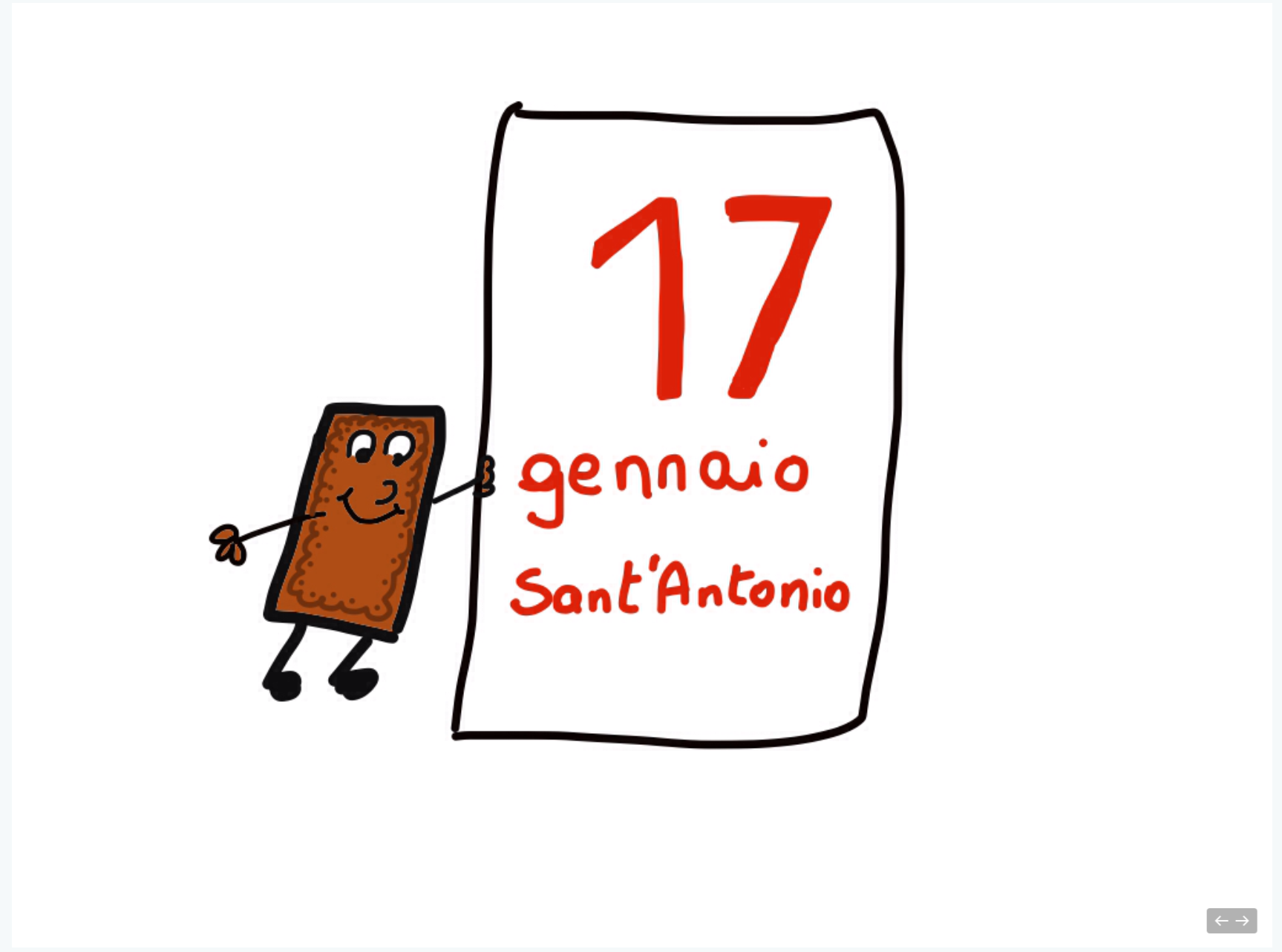Biscotti e falò
I cogoneddos sono tipici della festa sarda di Sant’Antoni ‘e su fogu dedicata a Sant’Antonio Abate: nella notte tra il 16 e il 17 gennaio, l’usanza vuole che si accendano dei grandi falò, di solito nel piazzale antistante una chiesa dedicata a Sant’Antonio in molti paesi dell’isola.
Il rituale inizia alcuni giorni prima con la raccolta del materiale per l’accensione del falò (fascine o una pianta cava al suo interno), persino frasche di rosmarino profumatissimo) e con il trasporto fino alla chiesa accompagnato dal suono delle launeddas, lo strumento musicale tipico.
Una volta che il materiale viene benedetto dal prete, si accende il fuoco e i disegni del fumo sono visti per tradizione come auspici per il nuovo anno.
La festa va avanti tutta la notte tra il 16 e il 17 con musica, balli, degustazione di cibo fino a che il falò si spegne e le ceneri vengono raccolte per scongiurare malattie a uomini e animali.
La venerazione di Sant’Antonio Abate è comunque diffusa in tutta Italia e in Europa( all’estero è conosciuto come Anthony the Great):gli eventi organizzati, che hanno al centro sempre il rito del falò o sagre e fuochi d’artificio, sono molteplici e corrispondono alla data presunta della morte del santo, il 17 gennaio del 356.
Come mai questo santo è così amato?
A lui, egiziano di nascita (Coma,vicino al deserto della Tebaide, 251) si riconosce l’inizio del monachesimo cristiano ovvero della scelta di passare la vita in solitudine per ricercare una comunione più intensa con Dio.
Ritiratosi ventenne, dopo la morte dei genitori, nel deserto della Tebaide, riuscì a resistere alle numerose tentazioni del diavolo e per questo il Signore gli consentì di guarire fisicamente e spiritualmente i malati e di istruire coloro che volevano avviarsi alla vita ascetica.
Il culto si estese poi soprattutto in epoca medievale e vari sono i poteri a lui attribuiti: taumaturgo capace di guarire le malattie più tremende,specie infiammazioni della pelle come l’herpes zoster-detto appunto fuoco di Sant’Antonio-, protettore degli animali domestici, specie il maiale( forse, perché dal maiale si ricavava il grasso per preparare emollienti da spalmare sulle piaghe). Infatti questa figura religiosa, che nel lombardo è conosciuta anche come sant’Antoni du’l purscel ,è sempre rappresentata accanto ad un maialino.
L’animale, secondo una leggenda, avrebbe aiutato il santo a ‘rubare’ al diavolo nell’inferno un tizzone di fuoco da donare agli uomini per riscaldarsi .
A Varese l’appuntamento con il bel rito di Sant’Antonio e la benedizione degli animali è a breve, in piazza della Motta. Già si sente l’odore del falò …
Portatevi dietro anche un po’ di cogoneddos sfornati con la ricetta di Patrizia e auguri . Buona festa!
Mara
Anthony the Great, cookies and bonfire
Cookies and bonfires
Cogoneddos are typical cookies for the Sardinian feast of “St. Antoni’e su fogu” dedicated to Sant’Antonio Abate: the night between 16 and 17 January, in many places of Sardinia, the tradition is to light up large bonfires, usually in the square in front of a church dedicated to St. Anthony.
The ritual begins a few days before with the collection of material for the lighting of bonfires (fagots or a plant hollow inside, even branches of scented rosemary) and it transport to the church accompanied by the sound of launeddas, musical instrument typical.
Once the material is blessed by the priest, they light the fire and the smoke drawings are traditionally consideredn as good wishes for the new year.
The party goes on the all night between 16 and 17 Jannuary with music, dancing, tasting of food until the fire goes out and the ashes are collected to prevent diseases in humans and animals.
The veneration of Saint Anthony is still widespread throughout Italy and Europe (abroad he is known as Anthony the Great): organized events, which have always bonfire at the center of the ritual or fireworks, are multiple and correspond to the date of the Saint’s death, supposed on January 17, 356.
Why this saint is so loved?
He was born in Egyp by birth (Coma, close to the desert of the Thebaid, 251) and he started the Christian monasticism or, better, the choice to spend your life in solitude to seek a more intense communion with God.
He retired in the desert of the Thebaid, in his early twenties, after the death of his parents, and was able to resist the many temptations of the devil and that’s why the Lord allowed him to heal physically and spiritually sick and to educate those who wanted to start up the ascetic life.
The cult Saint Anthony spread especially in medieval times and there various powers were attributed to him: a miracle worker capable of healing the most terrible diseases, especially inflammation of the skin such as herpes-zoster said precisely Sant’Antonio’s fire-, protector of domestic animals especially the pig (perhaps because the fat was extracted from pig to prepare emollient spreads on the wounds). In fact this religious figure, which is also known as the Lombard “Sant’Antoni du’l purscel“, has always represented next to a pig.
The animal, according to legend, would have helped the saint to ‘steal’ from the devil in hell a fiery ember to give to men to warm up.
In Varese, the appointment with the beautiful rite of St. Anthony and the blessing of animals is shor timet, in Piazza della Motta. Already you can smell the campfire …
Bring along a bit ‘of cogoneddos baked with Patrizia’s recipe and best wishes. Good party!
Mara







